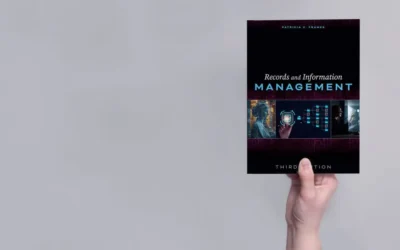Librarians and Technology #13: Considering Obsolete Formats and Technologies
Miriam Kahn, MLS, PhD
We’ve all got them in our information centers, obsolete formats and equipment lurking in drawers, cabinets, and storage areas. Sometimes the obsolete is taking up “valuable” shelf and storage space. Skills for special librarians include evaluating older formats and technologies. Before you start to discard, you’ll need to identify them and review decision criteria for both retention and removal.
Identifying the obsolete
The nineteenth and twentieth centuries were periods of invention and technology. The telegraph, telephone, radio, movie camera and projector, and phonograph were invented and used to capture sound and movement, documents and conversations. If institutional collections are old enough, deep, broad, or rich enough, you probably have a number of early versions and formats.
What are obsolete technologies? Here’s your first clue that something is obsolete: no one knows what the piece of equipment is or how to turn it on. Another feature of obsolete technology is there’s no equipment to play the recording or show the moving images. In both instances, the first reaction is to discard the item—but before we do that, we might ask, “Why is it still here?”
Microforms fall into another category as they are visually accessible and require simple technology to view, and they may be accessible through digital subscriptions. NOTE: Not all microforms have been converted to digital files—and the originals and microfilm/fiche may be more legible than their digital facsimiles.
A Little Historical Background
PHOTOGRAPHY was invented in 1839 and used to capture images, to study things large and small—documenting the stars, the environment, and the world around us. Photographs were made or printed onto metal, glass, and paper using a wide range of chemicals and printing processes, most of which are extremely durable and stable.
While photographs aren’t obsolete, microforms are often considered so. Micro-photography was used to reprint books, create facsimiles of manuscripts, and even artwork, maps, and other photographs. Microfilm, microfiche, and micro-opaque cards are produced using photographic techniques and are present in our libraries, archives, and historical societies. Businesses used microforms for capturing and retaining images of contracts, bills, checks, and other documents while eliminating “paper.” The same can be said of indices, directories, and catalogs. With the advent of first analog then digital scanning capture technologies and OCR, the contents of many microforms have been recaptured and are stored in complex computer databases and catalogs.
SOUND RECORDING devices were first invented in 1877 by Thomas Edison. His devices captured sound on tin foil wrapped around a cylinder. Sound recordings were captured on a wide range of materials including wax cylinders, wire, paper, and magnetic tapes, discs of metal, glass, shellac, and vinyl, and digital tape and files. The technology to play back sound recordings is a varied as the formats.
MOVING IMAGES OR MOTION PICTURE CAMERAS were also invented by Thomas Edison in 1888 and also come in a wide variety of formats. The images were captured on various types of film from nitrate to polyester to magnetic tapes and now digital files. If the moving images are on nitrate film, it’s important that the items are stored appropriately and well separated from the rest of the collection.
Older Technology
Each format described above requires a different piece of technology to record, play, hear, view, or read what was captured. Microforms are the easiest to both identify and to access or view. Even if the equipment isn’t available in your institution, light and magnification are all the technologies needed to read the contents.
As to audio and video materials, in addition to microform readers and printers, it is possible you have the equipment on a table, shelf, or storage area. Some of the technology is easy to identify; micro-format readers and reader/printers, tape recorders, and record players are all common enough to recognize. However, sound and video formats require specialized equipment to play them, so a few organizations, including the Library of Congress, National Archives (US), and the Smithsonian, to name a few, have the largest collection of old playback equipment.
Decisions, Decisions
When evaluating retention of photograph collections and microforms, the first consideration is whether the images fit within collection scope and mission; second is physical condition and the ability to store the materials in the appropriate environmental conditions.
Since shelf and storage space is a valuable commodity, deciding to retain an older format affects the bottom line and is a continuing cost. So how do we justify the cost?
You start the decision making process by pairing format and equipment together. Keeping moving images and sound recordings without the playback equipment is difficult to justify. Consider getting mission critical contents transferred to today’s readily accessible formats and/or digital files.
Physical condition is a critical factor when deciding about retaining or deaccessioning obsolete formats. After determining that they fit within collecting scope and mission, consider their physical condition.
- Does the format require special environmental storage conditions? If the answer is yes, consider the cost of long-term specialized storage.
- Consider the fragility of the format. Is it playable or does it require extensive conservation work?
- Is there a budget line for conservation and preservation?
By answering the above questions, you create a decision tree, providing the rationale for retaining or discarding older and obsolete formats and technology.
Value in the old
Just because the items are old or the technology “old-fashioned” doesn’t mean the information is out of date or useless. Skills for special librarians include giving serious consideration to intellectual content while evaluating how it fits within the mission and collecting scope of the institution and the needs of our researchers. Additional questions to consider include:
- Do researchers request the items?
- Are the images, sound, or materials useable?
- Is additional content, data, and commentary or notes on the physical object that isn’t captured by surrogates, facsimiles, or catalog records.
- Does the physical object contain useful information that’s separate and distinct from the intellectual content?
- How many copies of the original and/or the surrogate are extant?
Take the time to apply solid evaluation criteria to these older formats. Just because they are older does not cancel out their usefulness to researchers and top-notch information professionals.
Summing it up
Evaluate obsolete formats for retention or deaccession using the same factors as current materials: fit within collecting scope and mission, frequency of request, and physical condition. Working equipment to access sound recordings and moving images is crucial for retention. Using information professional evaluation criteria is imperative—especially when dealing with older, less used formats.
Additional reading:
Read more about Edison and his inventions on the Library of Congress Website
Save our Sounds at the British Library https://www.bl.uk/projects/save-our-sounds
Microforms (Wikipedia) https://en.wikipedia.org/wiki/Microform
For the history of photography and identifying photographic type check out The Image Permanence Institute’s Graphic Atlas (based at RIT) http://graphicsatlas.org/
Miriam Kahn, MLS, PhD
Miriam B. Kahn, MLS, PhD provides education and consulting for libraries, archives, corporations, and individuals. See Miriam’s pieces for Lucidea covering library technology and skills for special librarians. Also check out SydneyEnterprise, and GeniePlus, Lucidea’s powerful integrated library systems.
Similar Posts
Interview with Author and Librarian Dr. Jae Rossman on Special Collections and Archives
Dr. Jae Rossman wrote Access to Special Collections and Archives, available now from Rowman and Littlefield. The book is an excellent resource for special librarians who work with special collections and archival materials.
Interview with the Author: Dr. Patricia Franks on Records and Information Management
Dr. Patricia Franks is the author of Records and Information Management, now with an upcoming third edition to be published by ALA Neal-Shuman in the spring of 2025. My interview with her follows.
Are There Drawbacks to Using GenAI for Research?
Researchers must take responsibility for understanding how GenAI works and closely review literature search results before relying on them. Let’s take a look at three major drawbacks for researchers and special librarians to consider when leveraging or recommending GenAI platforms.
Researching with GenAI: Tools & Tips for Special Librarians
When GenAI first became widely available, there was a great deal of discussion about how it would “hallucinate”—that is, make up content and sound very sure of itself when doing so.




Leave a Comment
Comments are reviewed and must adhere to our comments policy.
0 Comments